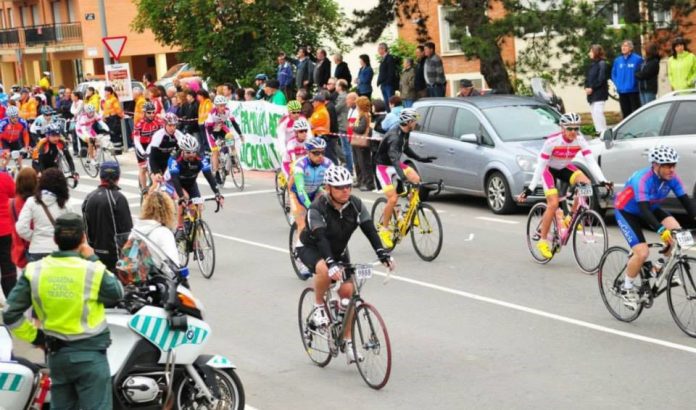Introduction
Among Europe’s most iconic cycling events, the Quebrantahuesos Gran Fondo stands out as a bucket-list ride for endurance cyclists. Named after the Bearded Vulture (Quebrantahuesos in Spanish), this prestigious sportive attracts thousands of riders each year to conquer the challenging climbs of the Spanish Pyrenees. With professional-level organization, stunning mountain scenery, and a course that mirrors the intensity of major cycling tours, the event is both a physical challenge and a cultural experience.
Whether you’re an experienced long-distance cyclist or looking to test your limits for the first time, the Quebrantahuesos offers the perfect opportunity to push boundaries in one of the most well-regarded Gran Fondo events in the world.
History of the Quebrantahuesos Gran Fondo
The Quebrantahuesos Gran Fondo has been a staple of the European amateur cycling calendar since 1991, when the first edition took place in the small town of Sabiñánigo, Spain. The event was the brainchild of Peña Ciclista Edelweiss, a local cycling club with a passion for mountainous routes and grand challenges. What started as a modest event for regional cyclists quickly grew into an international phenomenon.
By the late 1990s, participation numbers surged, and the event began attracting riders from all over Europe and beyond. Its combination of professional-level organization, scenic alpine routes, and steep ascents soon gave it a reputation comparable to Italian and French counterparts like the Maratona dles Dolomites or the Étape du Tour.
Today, the Quebrantahuesos is not only a flagship event on the Spanish cycling calendar but also part of the UCI Gran Fondo World Series, further cementing its status as a world-class long-distance cycling challenge.
Location of the Event
The Quebrantahuesos takes place in Sabiñánigo, a small town in the province of Huesca, nestled in the Aragonese Pyrenees of northern Spain. Sabiñánigo provides the perfect base for mountain cycling, with direct access to several of the Pyrenees’ most famous passes. Its location near the French border also allows the route to dip into southern France, adding an international flair to the event.
The surrounding terrain is dramatic and varied, featuring everything from winding forest roads to high-altitude mountain passes. Riders are treated to sweeping vistas, historic villages, and open plateaus that make the physical challenge worth every pedal stroke. Moreover, the area enjoys a strong cycling culture, with local spectators lining the route in support of participants.
Logistically, Sabiñánigo is well-equipped for large sporting events, offering ample accommodations, support services, and access via road and rail from major Spanish cities like Zaragoza and Barcelona.
About the Event
When is it held?
The Quebrantahuesos Gran Fondo typically takes place in mid to late June, taking advantage of long summer days and generally stable weather conditions. The exact date may vary slightly each year, so early registration and travel planning are essential.
Route and Distance
The main Gran Fondo route spans 200 kilometres (124 miles) and features more than 3,500 meters (11,500 feet) of climbing. It includes four legendary Pyrenean passes:
- Col du Somport (1,632m)
- Col de Marie-Blanque (1,035m)
- Col du Portalet (1,794m)
- Hoz de Jaca (1,280m)
These climbs are not only long and steep but also scenic and historically significant, having featured in multiple editions of the Tour de France and Vuelta a España.
For cyclists looking for a shorter challenge, the event also offers the Treparriscos Medio Fondo, a 85-kilometre ride with a less demanding profile.
Timings and Start Format
The event follows a mass start format, with waves based on rider numbers and categories. Timing chips are provided, and although it is not a race, many cyclists aim for personal bests or benchmark times. Aid stations, mechanical support, and medical services are available throughout the course, ensuring safety and assistance at every critical point.
Cut-off times are strictly enforced to maintain the flow of the event, so participants are advised to train adequately in advance. For most riders, completing the full Gran Fondo takes between 7 and 10 hours, depending on fitness and pacing.
General Things to Know
- Registration is highly competitive. Entry is usually based on a lottery system due to high demand.
- Weather can be variable in the mountains; even in June, temperatures can range from hot in the valleys to cold at the summits.
- Bike choice typically favours lightweight road bikes with compact gearing to handle steep gradients.
- Nutrition and hydration are critical. The course includes multiple feed zones, but bringing your own essentials is recommended.
- Spectator support and community involvement are high, with locals turning out to cheer and volunteers helping at checkpoints.
Whether you’re racing against the clock or simply looking to enjoy the ride, preparation and pacing are key. This event is considered one of the more challenging Gran Fondos in Europe, and its elevation profile demands both climbing strength and endurance.
Summary
The Quebrantahuesos Gran Fondo is more than just a cycling event—it’s a rite of passage for long-distance cyclists. With a storied history, an epic route through the Pyrenees, and unmatched scenery, it’s no surprise that thousands of riders from across the globe make the pilgrimage to Sabiñánigo each year.
From the cultural richness of the Spanish-French borderlands to the physical demands of its mountain passes, this Gran Fondo embodies the spirit of cycling in its purest form. Whether you’re aiming for a personal record or soaking in every mile of alpine beauty, the Quebrantahuesos promises an unforgettable experience on two wheels.
Have you ridden Quebrantahuesos Gran Fondo or are you planning to one day? Share your thoughts, stories, or questions in the comments section below or submit your ride report here.












